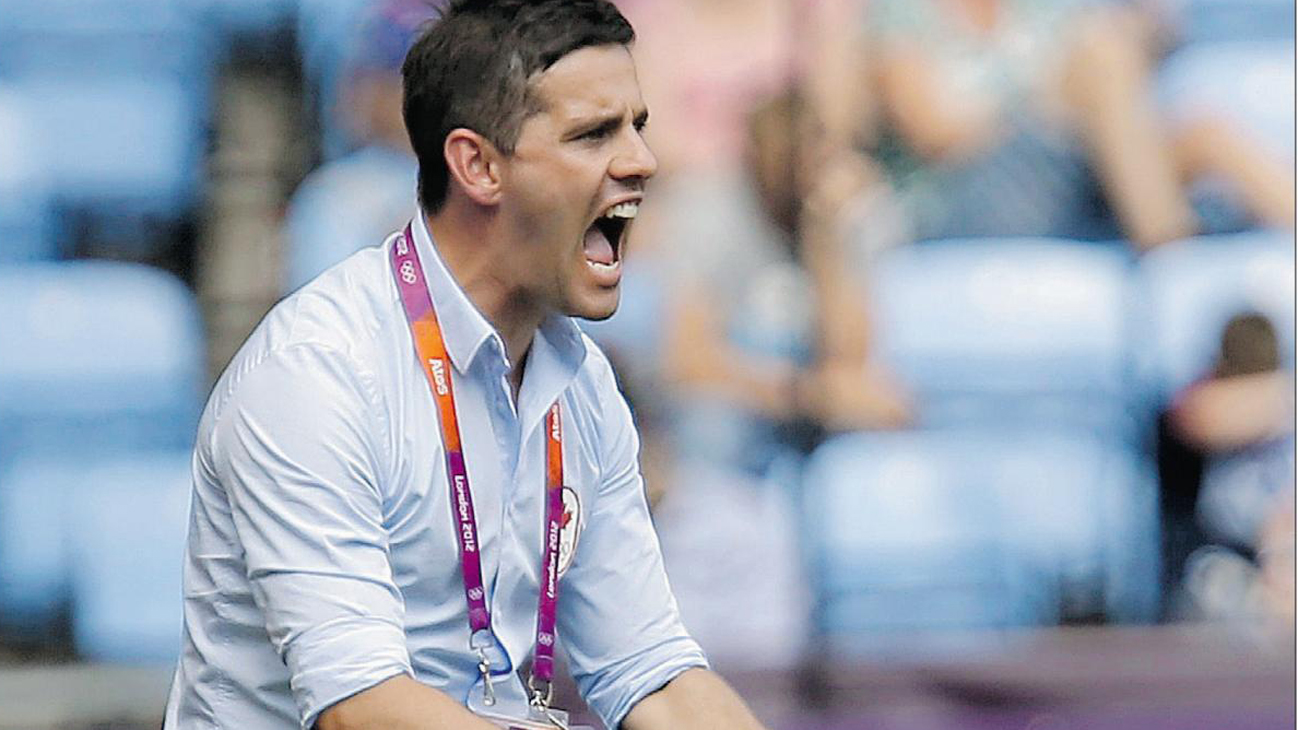As the Head Coach of the Canadian Women’s Soccer Team, John Herdman took a group once called a “struggling squad” to one that captured the hearts and minds of Canadians when they won the bronze medal at the 2012 Summer Olympic Games. Under his leadership, the team also took a gold medal at the 2011 Pan Am Games in Mexico―the first Pan Am gold in Canadian soccer history. In his riveting talks, John–who was a nominee for 2012 FIFA Coach of the Year–stresses the importance of developing a high performance culture, learning to overcome adversity with grace, and the role of leaders to inspire trust, confidence, and success, whether it’s on the field, in the workplace, or in the home. In this guest column for The Globe and Mail, John writes about the team’s need to succeed:
Looking back, the London Olympics were a true turning point for women’s soccer in this country.
Three years on, it still amazes me just how profoundly that run to the bronze medal, especially the last-minute loss to the United States in the semi-final, touched Canadians everywhere. As a sports fan, you start to realize that there are just some moments that are seared into the national consciousness, memories that are frozen in time.
Even now, I’ll get stopped by people who just want to say, “I’ll never forget that game. You guys were robbed.” I’ve had women come up to me in tears to tell me how our team’s performance changed their lives. I even got an e-mail from a guy who said he’d gone through a dark spell and ended up homeless, but that the team had given him hope to keep going in life. I’ve no clue how he got hold of my e-mail address, but I read it to the team and it stirred some raw emotion, helping them realize how they’ve affected people from all walks of life.
If we can do that to even one or two people with our performances at this year’s Women’s World Cup here in Canada, then we’ve ticked a pretty significant box.
As one of the few Canadian soccer teams to go deep into a tournament, I think the experience has served us well heading into the World Cup. We learned about the pressures that are on referees, the work we have to do as a leadership group and strategies and plans that we need to employ when the pressure starts to rise. It also gave me a far better understanding of the cumulative mental and physical fatigue that takes place over the course of a month-long tournament – the bronze-medal win over the French took every last drop of energy that our team had.
The stakes are far higher this time though. Entering the Olympics on the back of our last-place finish at the 2011 World Cup, we were true underdogs, and fans were just hoping our performance wouldn’t lead to further embarrassment. As a group, we felt we were good enough to make the podium and we wanted to make the country proud of us again; in fact, one of the key catchphrases within the team was we wanted to see our flag rise.
This time, as hosts, we’ve got no choice. We have got to get to the final.
To prepare us for that journey, the team has been subsisting on a steady diet of friendlies against some of the best women’s teams in world soccer, such as Japan and Germany. We also know that if we are going to be crowned world champions this year, we are almost certainly going to have to play the United States again sooner or later. With that thought firmly in mind, we scheduled a match with them 10 months after the Olympic defeat, at BMO Field in Toronto.
Predictably billed as the rematch, the fan interest was incredible, with the game selling out in two hours. We were going through a transition phase and bringing in some younger players, like then-17-year-old Kadeisha Buchanan, and we knew it was going to be a huge challenge. But at the same time, we knew it was the right thing to do.
The level of expectation in this country was through the roof, as it was Canada’s first chance to see the players since the Olympics. I’m not sure that supporters knew that we were blooding some younger players and trying a different system of play, but it certainly brought home to the team that the pressure of representing Canada had just gone way up.
We held our own for 70 minutes, but then the floodgates opened up, and the United States ran out 3-0 winners. As many remember, Canadian-born Sydney Leroux grabbed the headlines, scoring the third before raising a finger to her lips and shushing the crowd that had booed her throughout. In hindsight, she may have actually helped us out by taking some of the attention away from the final score.
It was a good learning experience. Players needed to experience getting beaten at home and to know that they’re not dead and that they can still get up the next day. That’s the sort of thing that will condition them to play in the environment that they’re going to have to play and perform in at the World Cup.
It certainly seemed to be a lesson that helped them the next time we played the United States on home soil, in Winnipeg last year, in a hard-fought 1-1 draw. A passionate crowd of 29,000 perfectly illustrated that, come this month, there will be nowhere to hide, and if the players aren’t ready for the biggest test of their lives, it’s not going to be a comfortable place to be either.

